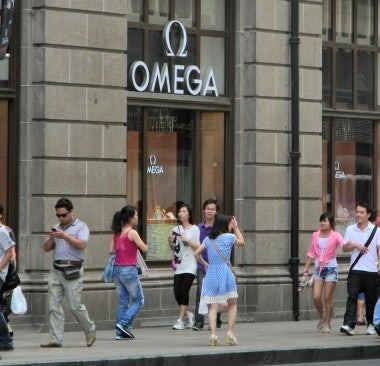China "A Demographic, Not A Geography"#

It's becoming common knowledge in the luxury industry that relatively young, cashed-up (and often outbound) Chinese consumers continue to buoy the global market, but digging past the obvious facts and figures, many high-end brands are finding that a poor reading of what these shoppers really want can prove disastrous. Looking past the sound-bytes we've heard for the last several years about Chinese consumers "snapping up luxury goods" around the world, a new China Luxury Network report adds color to these macro-level observations of China's emerging luxury consumer, giving brand managers and marketers a better sense of not only why Chinese shoppers are flocking en masse to luxury boutiques from London to Lanzhou but how brands can better attract and serve this increasingly important buyer base.
Already, China has firmly established itself as the world's second-largest luxury market, and with more than two million millionaires today, the country is well on its way to becoming the largest by 2020. Currently, due to factors such as China's high luxury taxes, better choice and more inventory, and greater prestige, more than half of Chinese consumers' luxury purchases continue to be made overseas and in Hong Kong. As such, brands have found that engagement with this new generation of Chinese outbound tourist-shopper is key, but old-fashioned thinking and marketing is hampering brands with less operational experience in the China market.
As China Luxury Network Co-Founder Sage Brennan put it, “Brands need to stop thinking about China as a geographic market, and start thinking about Chinese consumers as a global demographic interacting with your brand in Shanghai and Wuhan, San Francisco and Paris. Once you understand Chinese consumers in this perspective, and recognize that branding and marketing to Chinese consumers is not a “market entry” issue, but a strategic global challenge, it completely changes the way you approach this emerging consumer.”
Continuing, Brennan noted that there is more than one type of Chinese luxury consumer, a fact that many brands continue to overlook. While some brands continue to underestimate the purchasing power of China's notorious "second generation wealthy" (富二代) -- twentysomethings often sent by their wealthy parents to live, work or study abroad -- others "count Chinese consumers in their 20s among their best customers.”
For its new report, China Luxury Network conducted qualitative and quantitative consumer research with more than 100 high net worth Chinese consumers traveling in the United States, along with an audit of more than 150 global luxury fashion brands to assess their engagement with Chinese consumers globally, and interviews with Mandarin-speaking sales associates and boutique managers in luxury retailers around the world.

Among the key findings of the report:#
-
Most (62 percent) of the large luxury fashion brands audited already operate a physical China retail presence#
and are rapidly expanding into second and third tier cities, as well as online.
- 38 percent of the 150 brands audited have more than five retail locations in China.
-
Brand awareness is the number one driver of purchase decisions#
.
-
Celebrity is the most talked-about association for global fashion brands#
in China. The top mentioned celebrity in connection with global luxury fashion brands in China was Faye Wong (王菲), and three of the top five mentions were Gossip Girl, Blake Lively and Leighton Meester.
- Special offers or gift-with-purchase were the top ranked sales incentives, followed by
Mandarin-speaking associates#
, Chinese credit card acceptance and unique experiences.
The report includes a litany of recommendations for brand managers operating in China or attempting to better tap the global Chinese luxury consumer. Among the recommendations are intimately knowing your product availability and pricing in China as well as other key markets, since global variations in pricing are a critical influencer of Chinese buying. Also, engagement with Chinese celebrities and influential new and old media influencers is crucial, as these individuals hold, on the whole, far more sway over consumer behavior in China than their counterparts in Western countries. Understanding the general color, style and sizing preferences of Chinese shoppers is another important recommendation, as are the according adjustments to merchandising and customer service. For example, China's wealthy outbound consumer values his or her privacy far more than most brands think, and as such rolling out the red carpet and throwing public parties would be far less appreciated than "old-school" service and personal attention.
To purchase the report, contact us at contact@jingdaily.com or for more info about becoming a China Luxury Network member, contact Renee Hartmann at
renee@chinaluxurynetwork.com#
.

